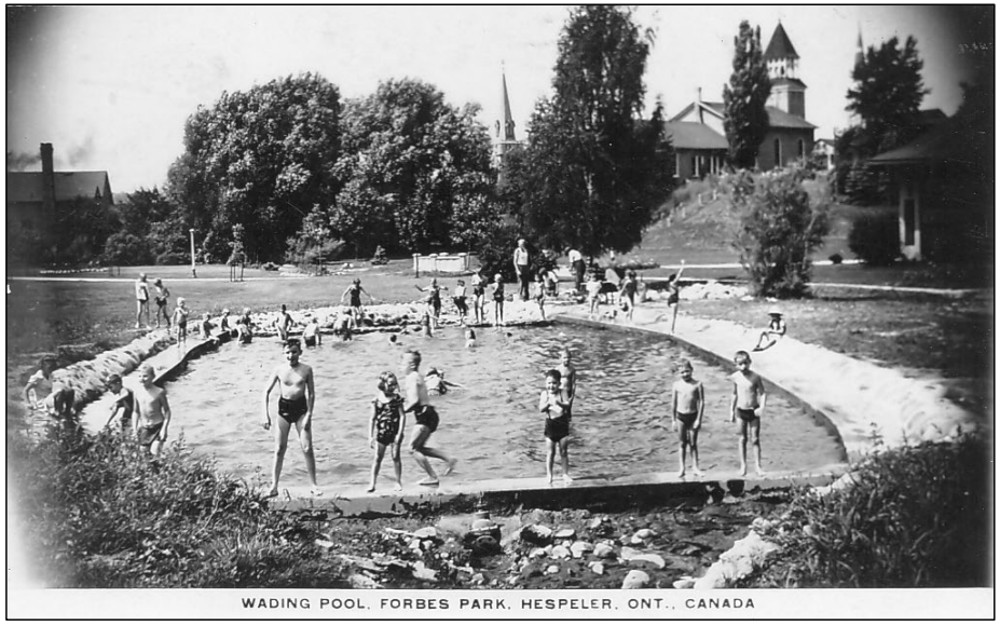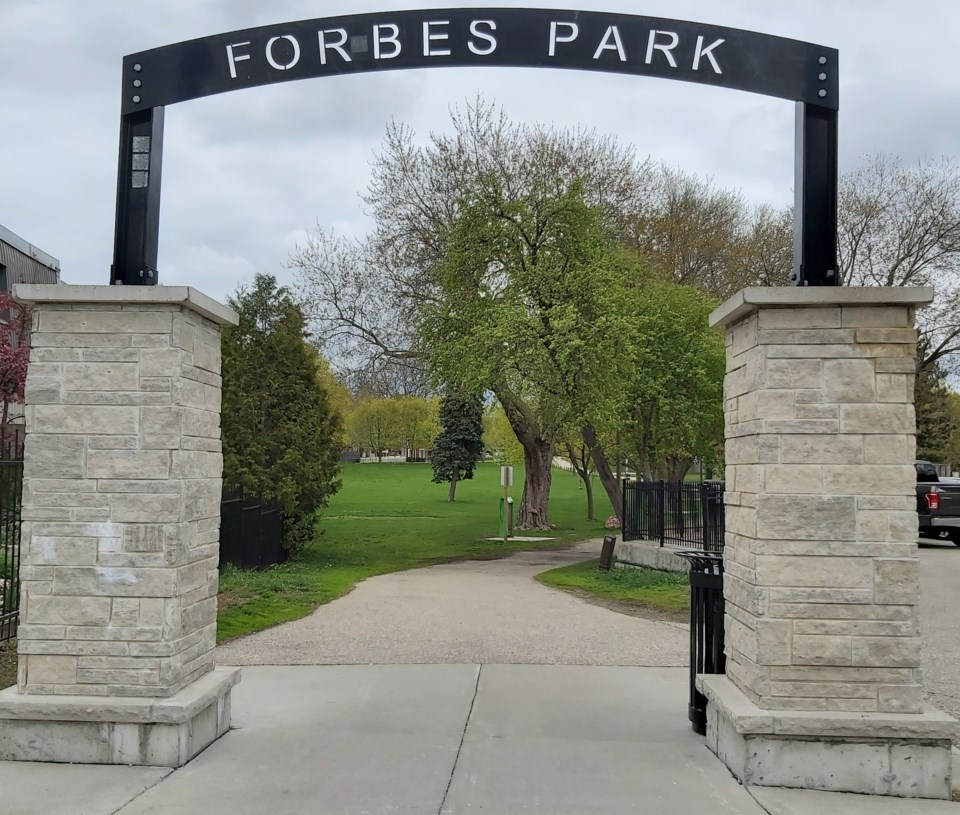Forbes Park will soon be recognized and celebrated as an integral part of Hespeler history.
Senior heritage planning staff at the City of Cambridge is recommending Ontario heritage protections be put in place for the property that started out as a millpond in the mid 1800s.
For more than a century, the park has been the playground for community events that have ranged from old boys reunions to concerts and multi-cultural festivals.
The city's municipal heritage advisory committee (MHAC) will vote next week on a staff recommendation to designate the park at 16 Kribs Street under Part IV of the Ontario Heritage Act.
A vote in support would lead to a notice of intention to designate following council approval.
Forbes Park was created following the donation of land by George Duthie Forbes in 1915.
The existing bandstand structure was constructed ca. 1924 when the Women’s Institute commissioned its construction to honour Hespeler soldiers who died in the First World War. According to the Hespeler Heritage Centre, the bandstand was originally built in Little Riverside Park in 1919, but after it was destroyed by fire, new plans moved it to Forbes Park.
The city says the property is not currently listed on the heritage register nor does it have any status under the Ontario Heritage Act despite its history and prominent heritage features.
An application for heritage designation was received by staff on Feb. 27, submitted by a representative of the Hespeler Village Music Festival.
The 4.73 acre property as extends from Forbes Street to the south, Tannery Street East to the east, and Kribs Street to the west and is within the Hespeler Village Community Core Area designation.
The staff report says the land the park sits on was originally surveyed as part of Plan 540 in 1858.
It wasn’t until the late 19th century that the property began to be used in support of industrial activity.
With Spring Creek running through the property, a large portion of the land functioned as a millpond to support an early sawmill and textile mill operated by Jonathan Schofield (1830-1918) and Robert Forbes (1814-1895).
Robert went on to buy out Schofield and operate the mill, which later became Dominion Woolens and Worsteds Company Limited after his son, George Duthie Forbes, sold it in 1928.
Before the property became a park, it was home to the Universal Lightning Rod Co.
The historic concrete bridge on the path through the park dates to ca. 1919 and once spanned Spring Creek, the watercourse that fed the millpond. The pathway, formerly known as Jawbone Street, connects to the park’s parking lot.

Forbes Park also contains the Hespeler Scout House at 22 Kribs St., a municipally owned building that's scheduled for demolition.
According to archives from the Hespeler Herald and the Cambridge Reporter as well as other archival sources, the Park has seen few changes to its original layout over the years.
Most notably though, it has seen the removal of a wading pool constructed in 1943 and the introduction of modern recreational equipment including tennis courts, playground equipment and a splash pad.
The city plans to widen the park's internal pathways and possibly extend the width of the concrete bridge to better meet accessibility requirements.
There have been no objections to the city's plans to designate the park.




